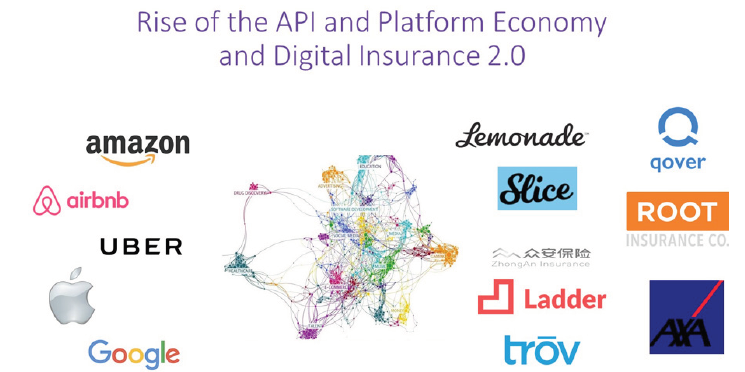WHY INSURANCE
Insurance products are fundamentally good products and have a social purpose in helping people. Nevertheless, the business is currently transforming fast and most major companies are struggling to embrace the new digital world, its culture, codes and vision.
The future of insurance will be very different than most existing solutions. The Digital Age is reinventing and reshaping businesses, putting the customer in control when data and artificial intelligence are going to transform the products, machine learning and analytics will revolutionise the way of measuring and calculating risk and more importantly its accuracy.
Vast & Broad Industry
- The first modern insurance can be traced back to the city’s Great Fire of London, which occurred in 1666. After it destroyed more than 30,000 homes, a man named Nicholas Barbon started a building insurance business. Insurance is nowadays present globally covering many types of insurance policies (auto insurance, business insurance, disability insurance, health insurance, homeowners insurance, life Insurance, pet insurance, renters insurance and travel insurance).
- In 2017, the global insurance industry can be summarized in a few numbers:
– Total premiums: 4.68 trillion euro (2.17 trillion in life, 1.1 in health and 1.41 in property and casualty insurance)
– Growth Written Premium of 4.7%
– West Europe: 3 billion in life and 50 billion in non-life
– North America: 54 billion in life and 426 billion in non-life
– APAC: 288 billion in life and 219 billion in non-life
– Latin America: 35 billion in life and 38 billion in non-life
– Africa: 14 billion in life and 7 billion in non-life
– Eastern Europe: 2 billion in life and 11 billion in non-life
– Middle East: 6 billion in life and 24 billion in non-life
Source: McKinsey (https://www.mckinsey.com/industries/financial-services/our-insights/2019-global-insurance-trends-and-forecasts#)
Broken Sector
- Most insurance companies are large organisations, often driven by outdated corporate structures and visions. They are based on labor intensive back offices and expensive route to market.
- Customer satisfaction and customer engagement are low, resulting in poor brand loyalty when they should become customer centric and offering a high customer experience and free contents via social media.
- Their products are partly outdated and sold via old fashioned distribution models using expensive broker solutions and websites when they should be looking at selling customizable products via mobile apps.
- Their IT spending still goes toward maintaining change-resistant legacy environments instead of embracing the digital world composed of apps, bots, artificial intelligence and machine learning.
- Measuring and calculating risks are still done via basic questionnaires using a few data points and human actuaries when big data are now accessible, revealing patterns, trends and associations making today’s method of calculating risks seems down medieval.
- Insurers should be upgrading not only their technology systems and operating models, but talent capabilities and workplace policies to resolve an expected exodus in baby boomers and a widening digital skills gap.
- Nevertheless, many insurance companies are comfortable with what they are doing. They have existing products that provides them with an enough cash flow, net income and wages and they have become complacent.
Dematerialised Commodity Product
- Most standard insurance products are commodity products which are universally consumed by users around the globe, especially in developed countries. For most consumers, all insurance products are alike and providing the same purpose, so it does not make any difference which is chosen. As a consequence, the main differential factor is price making our goal to develop a business model that allows the company to operate at low costs while still proving customer values and great user experience.
- Being a dematerialised commodity product also allows us to scale geographically and technically in the same way as AirBnB or Spotify were game changers in their industries. If we look at property insurance for example, the same approach and services are being offered, no matter in which region or town you live. This allows the front end customer experience to be the same and deployed at scale, whereas the only difference is in the risk estimations and thus proposed policy cost.
Unspoiled by Innovation and Technology
- Core systems lie at the heart of every insurance operation. However, these systems have been built around the traditional Insurance 1.0 business model and a pre-digital age technology architecture. The Insurance 1.0 model and correlating value chain has operated across a number of functional silos creating a fragmented customer experience because each of these silos has unique characteristics and are organized around their own KPIs. While this organizational model and IT system landscape was effective for Insurance 1.0, it is not effective for Digital Insurance 2.0
- The use of big data, artificial intelligence, and cloud computing is changing the nature of work and the structure of the economy. This is where a digital platform economy is emerging. Modern companies like Apple, Uber, AirBnB have opened the doors to radical changes in how we work, socialize, create value in the economy, and compete for profits and, most importantly, customers.
- Our competitor like Lemonade, Slice, ZhongAn, Ladder, Trov and others, are embarking on Digital Insurance 2.0 business models using digital platform capabilities and ecosystems. Platform and open AI based business models provide these innovative companies speed to value, unique customer engagement, a test and learn platform for minimal viable products, and value-aligned optimized costs.
- Traditional insurance business models have been centered on products, siloed processes and backward looking actuarial risk pricing. A digital insurance platform breaks down these conventions and enables the creation of new and innovative digital insurance business models. This reinvention of the insurance business as a digital enterprise should result in customer centric efforts, a reduction of silos and an increase in forward-looking risk prevention.
Our Competitors:
